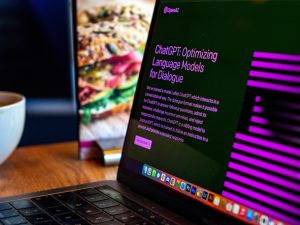AI in Education – Trusted, Proven, Essential, Practical (UK Guide 2025)
AI in education is reshaping how we teach, learn, assess, and support students across the UK. This trusted, proven, essential, and practical guide explains what works, what to watch, and how to implement AI in education responsibly—from lesson design and formative assessment to academic integrity, accessibility, data protection, and long-term strategy.

Why AI in education matters now
The UK sector faces converging pressures: heavy workloads, attainment gaps, rising pastoral needs, and expectations of digital fluency. AI in education offers realistic ways to reduce administrative friction, generate formative feedback faster, scaffold learning for diverse cohorts, and spark creative inquiry. When anchored in pedagogy and policy, AI in education becomes a catalyst for better teaching time, stronger inclusion, and sharper assessment design.
Crucially, AI in education is not a replacement for expert educators. It is a set of assistive tools that—like calculators, spellcheckers, and VLEs—shift how we spend our limited time. The prize is more coaching, more dialogic feedback, and more responsive learning journeys.
What we mean by AI in education
AI in education spans many technologies, from recommendation engines and adaptive practice to generative AI that drafts, summarises, explains, and analyses. Useful categories include:
- Assistive AI: tools that plan lessons, generate exemplars, or transform reading levels.
- Analytic AI: dashboards and models that highlight risk, pace progress, or surface misconceptions.
- Generative AI: systems that produce language, code, or images to illustrate, practise, or simulate.
- Assessment AI: structured marking support, rubric alignment, or formative feedback assistants.
Across these, the guiding principle for AI in education is human-in-the-loop: educators design the task, check outputs, and make the decisions.
High-impact benefits of AI in education
Faster, better formative feedback
Feedback is the highest-value activity many students receive. AI in education can draft first-pass comments against criteria, suggest probing questions, and offer exemplars. Teachers then refine tone, add judgement, and focus on the big conceptual moves.
Differentiation at scale
With AI in education, the same concept can be explained three ways, at three reading levels, with a worked example and a challenge extension. That flexibility supports mixed-attainment classes and helps students with varying needs engage on day one.
Reduced admin and reclaimed teacher time
From seating plans to parental emails, planning grids to curriculum maps, AI in education can prepare drafts that staff rapidly tailor, shortening routine tasks and protecting energy for teaching and pastoral care.
New forms of inquiry and creativity
Students can critique model answers, compare alternative reasoning paths, or role-play historical debates. When framed well, AI in education turns passive reading into active inquiry.
Risks, limits, and what to avoid
Hallucination and over-confidence
Generative systems can fabricate citations or misstate facts. Responsible AI in education requires verification, source checking, and explicit “trust but verify” classroom norms.
Equity and access
If some learners enjoy premium tools at home while others don’t, gaps may widen. An institutional stance on AI in education—including provision of safe, access-controlled tools—helps maintain fairness.
Privacy, IP, and commercial risk
Uploading student work or unpublished research to public models can breach policy. Any rollout of AI in education must include data-protection checks, contracts, and permissions.
Assessment validity
Where answers are easily synthesised by tools, task design must shift. The answer is not banning AI in education but designing assessments that demonstrate understanding and judgement.
Ethics, integrity, and safe adoption
Ethical AI in education respects learner agency, protects data, and is transparent about tool use. Staff model citation of AI assistance (“AI-assisted paraphrase; sources verified”) and make the distinction between permitted drafting support and prohibited outsourcing clear.
- Explain what’s allowed per task and why.
- Teach verification and citation practices alongside tool use.
- Co-create class “AI charters” that set shared expectations.
UK policy and guidance for AI in education
The UK landscape offers practical resources for leaders implementing AI in education:
- Jisc guides on digital capability, assessment, and AI practice across FE/HE.
- UNESCO guidance on AI and education, ethics, and teacher support.
- OECD resources on AI skills, policy, and assessment for learning.
- ICO: UK GDPR for data protection and DPIAs when deploying AI in education.
Assessment: grading, feedback, and academic honesty
Formative first
In formative contexts, AI in education can propose hints, Socratic prompts, or rubric-aligned comments. Teachers approve and personalise, ensuring feedback is accurate and motivating.
Summative boundaries
For high-stakes tasks, rules must be explicit. State whether AI in education use is prohibited, limited (e.g., language polishing), or permitted with disclosure. Provide examples so students understand the difference between support and substitution.
Authentic assessment design
Design tasks that evidence thinking: oral defences, live reasoning, process portfolios, data critique, or context-bound briefs. AI in education tools then become objects of critique, not shortcuts to answers.
Detection is not enough
Detection tools can be unreliable and biased. Emphasise pedagogy: task design that elicits unique thinking; drafts and checkpoints; reflective components that reveal understanding in students’ own voices.
Personalisation and inclusion: SEND, EAL, and widening participation
Done well, AI in education is an inclusion engine. Examples include simplified readings with key-word glossaries, bilingual scaffolds for EAL learners, and alternative modalities (audio, visual summaries) that support diverse needs.
- Generate stepwise worked examples and varied practice.
- Offer multimodal supports: transcripts, summaries, pictorial guides.
- Balance scaffolding with challenge; avoid over-accommodation.
Curriculum design and AI-ready pedagogies
Curricula that thrive with AI in education foreground thinking over recall, integration over listing, and critique over copy. A simple pattern—Explain → Explore → Apply → Reflect—turns AI into a catalyst rather than a crutch.
Knowledge + critique
Teach core facts and methods; then deliberately compare human and AI answers. Where do they diverge? What assumptions broke? This is disciplinary thinking in action.
Teacher workload, wellbeing, and professional development
Teacher energy is precious. AI in education can draft plans, adapt tasks, and assemble reading lists. Schools and departments should bank and share vetted prompts and exemplars, so gains scale beyond individuals.
- Build a common prompt library.
- Time-box AI drafting; never let it consume lesson prep windows.
- Use coaching circles to share what worked and what didn’t.
For structured project workflows and expectations management—useful alongside AI in education initiatives—see How It Works and the broader planning checklist in Assignment Writing Tips UK: 29 Proven, Essential Steps.
Data protection, safeguarding, and governance
Every AI in education deployment should pass a basic governance checklist:
- DPIA: run a Data Protection Impact Assessment where personal data are processed.
- Purpose limitation: clearly state what data are collected and why.
- Minimisation: collect only what you need; prefer on-prem or EU/UK hosting where feasible.
- Retention & deletion: define periods and processes; enable subject access requests.
- Safeguarding: block unsafe content; provide escalation routes for concerns.
The ICO’s UK GDPR guidance is the baseline for compliant AI in education use.
Choosing tools: procurement, pilots, and interoperability
Before buying, run a time-boxed pilot of AI in education tools with a clear hypothesis (“Will AI-drafted feedback reduce turnaround by 40% without lowering quality?”). Assess pedagogy fit, usability, data practices, and export options.
Procurement checklist
- Evidence of impact; independent evaluations where possible.
- Alignment with curriculum and assessment model.
- Open standards (e.g., LTI, QTI) to integrate with your VLE/MIS.
- Admin controls, audit logs, and role-based permissions.
- Clear pricing, including storage and support.
Implementation roadmap for schools, colleges, and universities
Phase 1: Discover
- Map pain points; prioritise formative feedback and admin relief.
- Define guardrails for AI in education use; draft staff/student guidance.
Phase 2: Pilot
- Run small cohorts; collect baseline and follow-up metrics.
- Hold weekly retros to adapt prompts and workflows.
Phase 3: Scale
- Train champions; publish exemplars and prompt libraries.
- Embed monitoring dashboards; plan annual reviews.
If you need editorial support to frame policies or training packs around AI in education, see Affordable Proofreading (UK) for ethical language polishing.
Measuring impact: metrics, evaluation, and ROI
You can’t improve what you don’t measure. For AI in education, track:
- Time: minutes saved per task; turnaround on feedback.
- Quality: rubric alignment; student understanding via low-stakes checks.
- Equity: participation rates; access; attainment gaps.
- Wellbeing: staff workload surveys; absence trends.
- Cost: licences vs. productivity improvement.
Blend quant and qual: numbers tell scale; narratives explain why. Organisations like Jisc, UNESCO, and the OECD publish frameworks you can adapt.
Case snapshots: UK practice
FE college: Accelerating feedback in functional skills
An FE department piloted AI in education to draft formative comments. Staff approved and customised the output. Feedback turnaround halved while student satisfaction rose; moderation confirmed quality held steady.
Secondary school: EAL scaffolding in science
Teachers generated bilingual glossaries and tiered explanations for key topics. Attainment among new-to-English learners improved without lowering cognitive demand—AI in education made entry points clearer.
University: AI policy and authentic assessment
A faculty rewrote assessment briefs to include oral defences, annotated process logs, and local datasets. AI in education became an object of critique; detection tools were supplementary, not central.
Prompting and workflow patterns for educators
Lesson planning prompt
“You are a UK teacher. Plan a 60-minute lesson on [topic] for [level], aligned to [exam board]. Include objectives, misconceptions, mini-checks, and a homework task. Provide tiered explanations at three reading levels.”
Feedback prompt
“Using this rubric [paste], propose formative comments on this draft [paste]. Highlight two strengths, two priorities, and one extension task. Keep a supportive tone. Do not assign a grade.”
Exemplar and counter-example
“Create a strong model answer (200 words) to this question [prompt], then a weaker answer with common errors. Add a checklist for self-edit.”
Banking effective prompts is a scalable part of AI in education; teams can adapt them by subject and level.
Assessment design that thrives in an AI era
- Localise: use local data, placements, or client-style briefs.
- Sequence: drafts + feedback + reflection; credit the process.
- Defend: include short viva, screencast walkthrough, or Q&A.
- Compare: ask students to critique AI outputs against sources.
These make AI in education a co-teacher that stimulates thinking rather than a shortcut that hides it.
Accessibility, universal design, and AI
Universal Design for Learning pairs naturally with AI in education. Offer multiple representations of core ideas, flexible means of expression, and varied engagement paths. Ensure generated materials are accessible (alt text, transcripts, headings).
Costs, funding, and sustainability
Budget beyond licences: training, change management, data storage, and evaluation. For sustainability, prefer efficient models, limit redundant generation, and reuse resources. AI in education should pay for itself in time saved and outcomes improved; measure both.
What’s next for AI in education (2025–2030)
- Multimodal tutors: tools that see, hear, and reason across media.
- On-device and private models: reduced data risk and offline access.
- Assessment analytics: richer, real-time insight into learning processes.
- Co-creative labs: students as designers, not just consumers, of AI in education workflows.
The throughline is the same: pedagogy first, guardrails always, equity by design.
Authoritative resources and internal links
External (authoritative)
- Jisc – Digital capability and AI guidance
- UNESCO – AI and education
- OECD – AI in education policy and practice
- ICO – UK GDPR for organisations
Internal (DoFollow)
FAQs
Is AI in education allowed in UK assessments?
It depends on local policy and task design. Many institutions allow limited, disclosed support for drafting or language, but prohibit outsourcing ideas or analysis. Always follow your handbook and module guidance.
Will AI in education replace teachers?
No. The most effective models are human-in-the-loop. AI reduces admin and scaffolds learning; teachers set goals, judge quality, and mentor students.
How do we prevent cheating with AI in education?
Design authentic tasks, sequence drafts and reflections, and use local or live components. Teach students to cite AI support and verify outputs; detection tools are secondary.
What data can we safely share with AI in education tools?
Only data covered by your DPIA and contracts. Prefer institution-approved platforms; avoid uploading personal or sensitive information to public models.
What quick wins show value fast?
AI-assisted feedback drafts, reading-level adaptations, exemplar generation, and administrative templating. Pilot with clear baselines and measure time saved and learning gains.
Ethics and integrity note
This guide promotes responsible, transparent AI in education. Educators remain the authors of pedagogy and judgement; students remain the authors of their work. Use AI to plan, draft exemplars, or polish language—but verify facts, cite sources, disclose assistance where required, and design assessments that measure understanding. Protect data under UK GDPR, and prioritise accessibility and equity so AI in education widens—not narrows—opportunity.
Staff research literacy and change leadership
Successful transformation depends on staff who can read evidence, pressure-test claims, and lead change with confidence. Build research literacy by carving out regular time to review short, practice-oriented summaries of peer-reviewed studies and trusted sector reports. Pair this with clinics on study design, effect sizes, and common statistical pitfalls so teams can judge whether a tool’s claimed impact is meaningful for their context.
Change leadership is practical. Start with a vivid problem statement—for instance, slow feedback in Year 10 English—then define what “better” looks like in numbers and in learner experience. Nominate a cross-functional trio—curriculum lead, classroom practitioner, and data/procurement colleague—to co-own the pilot, agree success criteria, and publish fortnightly notes on what’s working. Celebrate micro-wins, surface missteps without blame, and keep the focus on learning outcomes and teacher time.
Invest in coaching. Short, just-in-time workshops beat day-long one-offs. Record two-minute screencasts of effective workflows and store them in a searchable library. Link professional standards to these assets so recognition and performance conversations pull in the same direction as classroom practice.
Parent and community engagement
Families want clarity about how classroom tools affect learning, data, and equity. Host concise evening briefings that show, not tell: demonstrate a five-minute draft feedback workflow; walk through a reading-level adaptation; explain how teachers verify facts and personalise comments. Share the policy in plain English, with examples of permitted support and prohibited shortcuts, and make it clear how students should disclose tool use where required.
Address safety head-on. Explain what personal data never leave the institution, why approved platforms are used, and how materials are stored and deleted. Provide home-use guidance that emphasises learning behaviour: families can ask their child to explain an answer aloud, compare two solutions, or create a small worked example. These habits foster metacognition rather than chasing quick answers.
Provide a one-page conversation starter for parents and carers: three questions to ask about any homework task (“What did you try first?”, “How did your teacher want you to show your thinking?”, “What would you change next time?”). When home dialogue aligns with classroom expectations, academic integrity becomes a shared norm.
Subject playbooks
Mathematics
Generate varied practice sets, step-by-step worked solutions, and misconception probes. Ask learners to critique two alternative methods and justify which is more efficient or generalisable. For problem-solving, present partially complete solutions and require learners to finish and defend them aloud.
English
Create exemplar paragraphs at three quality levels, each annotated with rubric language. Encourage students to reverse-engineer criteria: which features separate a pass from a distinction? Pair summarisation with source evaluation and quotation accuracy tasks to reinforce scholarship.
Science
Build lab-report skeletons with prompts for variables, controls, and error. For theory, compare model explanations with textbook definitions and ask students to reconcile differences using evidence. In biology and chemistry, quick question banks with misconception-mapped distractors shorten the feedback loop.
Humanities
Use perspective-taking tasks: simulate contrasting historical viewpoints, then cross-check claims with primary sources and historiography. Emphasise citation discipline and reliability judgements; learners should practise distinguishing plausible rhetoric from supported argument.
Arts
For design briefs, produce mood boards and alternative interpretations students can iterate on. Keep authorship explicit: students record their creative decisions and annotate influences. Studio critiques remain human-centred; technology provides prompts and references rather than finished artefacts.
Operations & IT resilience checklist
- Identity and access: SSO where possible; role-based permissions; audit trails.
- Content controls: configurable filters; export logs; quarantine for flagged items.
- Data locality: UK/EU hosting options; clear sub-processor lists; breach notification terms.
- Business continuity: uptime SLAs; offline fallbacks; vendor escrow where appropriate.
- Version discipline: change logs, model updates, and regression checks before each term.
- Interoperability: VLE/MIS integrations via open standards; bulk export without lock-in.
- Support model: response times; named contacts; training materials and sandbox environments.
Run tabletop exercises each term: simulate a permissions error, a content misclassification, and a short outage. Document the playbook, assign owners, and iterate. Reliability earns staff trust as much as features do.
Myths vs realities
- Myth: “If students can access tools, written homework is dead.” Reality: Writing thrives when tasks demand comparison, justification, and voice. Design for thinking, not regurgitation.
- Myth: “Detection solves misconduct.” Reality: Detectors can be biased and uncertain. Better assessment design and process evidence reduce incentives to cheat.
- Myth: “Automation de-skills teachers.” Reality: Offloading drudgery protects time for high-leverage pedagogy—questioning, explanation, and mentoring.
- Myth: “Tools are either banned or fully open.” Reality: Most institutions adopt graduated permissions with disclosure, verification, and reflective components.
- Myth: “More data equals better insights.” Reality: Collect only what you can protect and use responsibly; small, timely data often serve teaching better.
Glossary and quick reference
- Large Language Model (LLM)
- A system trained on extensive text data to predict and generate language. Useful for drafting, explaining, and questioning when supervised by educators.
- Prompt
- The instruction given to a model. Clear role, constraints, and examples improve results.
- Guardrails
- Technical and policy controls that limit unsafe, biased, or off-task outputs.
- Hallucination
- Confident but incorrect output. Mitigate with verification, citations, and retrieval from trusted sources.
- Retrieval-Augmented Generation (RAG)
- A pattern where the model pulls in relevant documents from an approved store before drafting an answer, improving accuracy and auditability.
- Token
- A unit of text processed by a model (roughly three-quarters of a word in English). Token limits affect context length and cost.
- DPIA
- Data Protection Impact Assessment—required where processing may pose risks to individuals’ rights. Establishes necessity, proportionality, and safeguards.
- PII
- Personally identifiable information. Handle under strict policy; avoid uploading to unapproved platforms.
- Rubric-aligned feedback
- Comments organised by the assessment criteria, helping learners understand next steps.
- Authentic assessment
- Tasks that mirror real-world practice, emphasising process, judgement, and communication over recall.
Summary
AI in education is less a single tool than a new layer in how UK institutions teach, assess, and support learners. The strongest gains appear where formative feedback is time-consuming, where classes are mixed-attainment, and where staff hours are stretched. In those contexts, assistive and generative tools help teachers draft comments, tier explanations, and prepare exemplars in minutes rather than hours. The watchwords are pedagogy first and human-in-the-loop: educators frame tasks, approve outputs, and decide what quality looks like. Assessment practices adapt by emphasising process, local context, oral or live components, and critical engagement with AI outputs. Students learn to verify, attribute, and reflect—skills that matter beyond the classroom.
Responsible adoption of AI in education begins with clear policies. Institutions set what is permitted and prohibited for each task, explain why, and provide safe, approved tools. Equity is designed in by offering access on campus and by scaffolding content at multiple reading levels and in multiple modes. Privacy and compliance are non-negotiable: a DPIA, purpose limitation, minimisation, and retention controls are table stakes, alongside staff training and admin controls. Procurement is pilot-led—small cohorts, explicit hypotheses, baseline metrics, and go/no-go gates—so value and risk are surfaced early. Interoperability and export options protect against lock-in, while a prompt library and exemplar bank ensure gains scale across teams.
Measuring the impact of AI in education blends time saved and quality improved. Track minutes saved on planning and feedback, rubric alignment and student understanding via low-stakes checks, participation and access across cohorts, and staff wellbeing indicators. Costs should factor training and change management alongside licences, with sustainability in mind—efficient models, thoughtful reuse, and accessible artefacts. Looking ahead to 2030, multimodal tutors, private on-device models, and better analytics will become commonplace. The educational constant remains: learning is social, dialogic, and scaffolded. AI’s role is to amplify that, never to replace it.
Leaders can act now: publish a concise policy on AI in education; identify three quick-win use cases (feedback support, reading-level adaptations, admin templating); run a four-week pilot with baselines; and share outcomes openly. Teachers can reclaim time by banking effective prompts and co-creating class charters that set expectations and teach verification. Students can practise critical comparison—human vs. AI answers—and learn to cite AI responsibly. With pedagogy in the lead, guardrails in place, and evaluation built in, AI in education becomes a practical, trusted ally for better learning and fairer opportunity.










